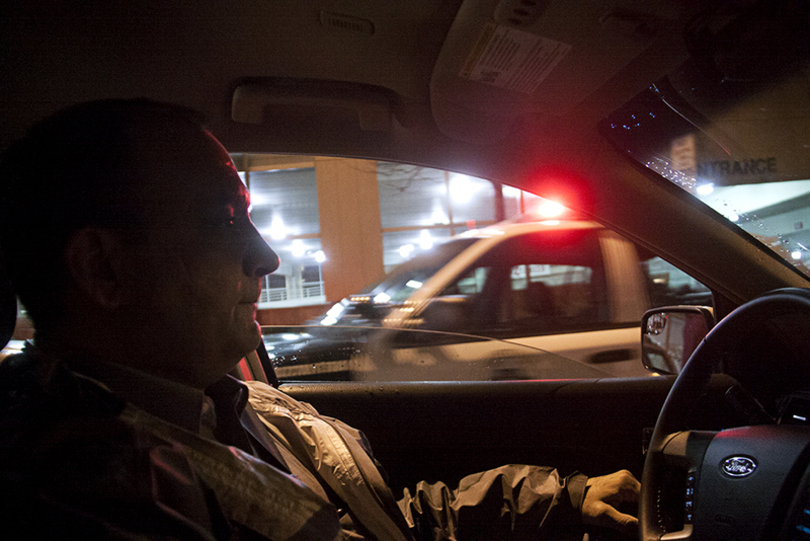DPS Chief considers implementing active shooter response training

Incoming students are not required to have any active shooting response training. DPS Chief Bobby Maldonado said he would consider changing that. Daily Orange File Photo
While active shooter response training isn’t required at Syracuse University, Department of Public Safety Chief Bobby Maldonado said he is interested in training incoming students.
Courses on alcohol abuse and sexual assault prevention have become a regular part of college orientation. But this year, incoming students at several universities also had to undergo training on how to respond in the event of an active shooter on campus.
“First-years are required to view certain videos relevant to alcohol abuse, sexual assault and things like that, so there’s no reason why they shouldn’t be required to view this sort of video as well,” Maldonado said.
Active shooter incidents have been on the rise in the United States. An FBI report found that an average of 6.4 incidents occurred annually between 2000-07. That average jumped to 16.4 between 2007-13, with nearly a quarter happening at educational institutions.
Nine people were killed in a shooting at Umpqua Community College in Oregon on Oct. 2. A week later, shootings occurred at Texas Southern University and Northern Arizona University, leaving two students dead.
On Oct. 14, SU issued an Orange Alert telling students to stay inside after suspects in a shooting on Hope Avenue fled the scene to Oakwood Cemetery near the SU campus.
Maldonado said during the incident some Residential Security Aides and students were confused on what to do during the situation. Maldonado said RSAs will be trained in the future.
He added that he is in favor of requiring students to undergo training so long as it’s kept short. Maldonado said he thinks students would be open to watching a short video on how to respond considering the recent nationwide shootings.
All freshmen and transfer students at the California University of Pennsylvania attended an A.L.I.C.E. (Alert, Lockdown, Inform, Counter, Evacuate) training program. The procedure was also taught to residential assistants and police officers, and is offered throughout the semester to students and staff.
Christine Kindl, director of communications and public relations at CalU, said the school implemented safety training for students at the recommendation of the campus police department.
“These kind of things are happening more often — more often than we would like to see — but these shootings could happen on any campus anywhere,” Kindl said. “Students seem to want to be engaged.”
CalU is not the only school training students. A.L.I.C.E has been taught at 400 universities in the U.S., according to the A.L.I.C.E. website. Kent State and Auburn universities — both of which have more than 20,000 undergraduates — require incoming students to complete A.L.I.C.E training.
Chris Grollnek, a national active shooter expert, said students should be trained because they are often the first responders during a shooting. He said while training takes a common-sense approach, the strategies themselves are not innate. The natural human reaction is to freeze.
“Many people say, ‘Oh, we’re going to rise to the occasion,’ but people don’t rise to the occasion. People rise to what training they have,” Grollnek said.
Strategies taught through A.L.I.C.E. include:
- How and when to evacuate a building
- How to barricade a door
- Breaking and escaping through a window
- Diverting an attacker
- What to do when police arrive
At CalU, training consists of a PowerPoint presentation followed by a question-and-answer period. A.L.I.C.E schools may choose to roleplay a shooting for practice, but Grollnek warned against the use of simulations because students are going to walk out of training more scared than informed.
At SU, active shooter response videos are available on the DPS website and students’ MySlice accounts.




